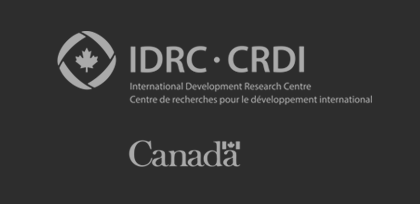OWSD NIGERIA NATIONAL CHAPTER PRESENTS WOMEN AT GREATER RISK OF ALZHEIMER’S : WAY FORWARD
July 28, 2022
OWSD Nigeria National Chapter University of PortHarcourt Branch Series of Scientific Communications: CHINAGOROM IBEACHU ON WOMEN AT GREATER RISK OF ALZHEIMER’S : WAY FORWARD
WOMEN AT GREATER RISK OF ALZHEIMER’S : WAY FORWARD
By
Ibeachu Chinagorom
INTRODUCTION
Studies have shown that women are at a greater risk of developing Alzheimer’s disease (AD) than men, although the reason behind this is not very clear. Some researchers believed it is due to longevity but Andrew 2022, argued that women living longer than men cannot be the whole answer as to why women are more likely than men to develop Alzheimer’s disease because even among individuals who are living and the same age, women are more likely to be diagnosed with Alzheimer’s than men. Alzheimer’s disease (AD) is the most common form of dementia, accounting for approximately 60–70% of cases (WHO 2017). Dementia is an umbrella term that houses a group of diseases and illnesses that affect thinking, memory, reasoning, personality, mood, and behavior. Dementia which was previously seen as a western world problem has gradually become a serious stigma for people in Low and Middle-income countries.
Alzheimer’s disease was first described in 1906 by Dr. Alois Alzheimer who discovered changes in the brain of a woman who died of an unusual brain disorder. Alzheimer’s disease is a type of brain disease, just as coronary artery disease is a type of heart disease. It is a progressive disease, meaning that it becomes worse with time. It is degenerative, which means cells degenerate or break down. It is irreversible, which means damage cannot be repaired. According to WHO (2020), dementia currently affects approximately 50 million people worldwide; a number that is projected to grow to 82 million by 2030 and 152 million by 2050.
AD is one of the leading causes of death in the world, currently ranked sixth. Approximately 5.7 million Americans suffer from Alzheimer’s, of which almost 2/3 are women (Alzheimer’s Association). Every, sixty -five seconds, another person develops Alzheimer's disease, and of these newcomers, roughly two-thirds will be women. For a woman over sixty, the risk of developing Alzheimer’s is twice that of developing breast cancer (Shriver). Clinical studies indicate that Alzheimer’s disease (AD) disproportionately affects women in both disease prevalence and rate of symptom progression, but the mechanisms underlying this sexual divergence are unknown (Daniel et al., 2018). Our study on Sexual Dimorphism in Dementia and Alzheimer's diseases also showed that women are more greatly affected by Alzheimer’s disease than men (Ibeachu et al., 2022).
The Hallmarks of Alzheime
- Amyloid Plaques and Neurofibrillary tangles are considered the “hallmark” of Alzheimer's disease.
- They form in and around the existing healthy brain cells, often choking them out and causing the brain cells to shrink and die off.
- The brain can shrink up to 2/3 of its original size and weight throughout the course of the disease.
RISK FACTORS
- Age, Female Sex, Less Education, Hearing loss, TBI, Hypertension, Alcohol>21/wk, Obesity BMI >30, Smoking, Depression, Social Isolation, Sedentary, Diabetes (IR), Air Pollution, Sleep Deprivation
FACTS ABOUT WOMEN AND ALZHEIMER’S
The statistics on women and Alzheimer’s disease are very startling.
- Do you know that women are disproportionately affected by Alzheimer’s disease more than men?
- More women are affected by dementia worldwide than men, for every man with dementia there are two women (Mosconi, 2020)
- A brain scan tells us that the rate at which brains cells are dying in the brain is faster in women than in men
- Women are more likely to live longer than men. However, although the risk increases with age, dementia is caused by the diseases of the brain, not age alone.
- Women in their 60s are more than twice as likely to develop Alzheimer’s disease over the rest of their lives as they are to develop breast cancer (Mosconi,202)
- Every 66 seconds someone in the United State develops Alzheimer’s, by 2050, it will be every 33 seconds, it may interest you to know that 2/3 of them are women.
- Another disconcerting stat is that once women develop mild cognitive impairment, their cognitive decline is two times faster than men.
Factors that place women at greater risk are:
Longevity: Age is a major risk factor, Scientists once thought that women were harder hit by Alzheimer's because of generally living longer than men. Heather Snyder, senior director of medical and scientific operations for the Alzheimer’s Association, says that this isn’t the case and that new studies suggest there are different biological pathways in women's brains and that hormones or even the way women's brains metabolize food differently may explain why Alzheimer’s manifests itself more in women. Again, Alzheimer's is not a natural aging sickness, studies have shown that Alzheimer’s disease is thought to begin 20 years or more before symptoms arise. Women’s brains have unique risk factors for dementia that until now have been ignored by science. (Mosconi,2020).
Female Hormone: Estrogen gives a neuroprotective effect on the brain. A decline in estrogen is the leading cause of problems that affect women after age 35. It has been hypothesized that the rapid decrease in estrogen during menopause functions as a trigger for the development of AD in women due to these neuroprotective abilities (Paganini-Hill & Henderson, 1994)
Menopause: Menopause and estrogen loss are a huge area of investigation for Alzheimer’s because estrogen supports an area of the brain (the hippocampus) responsible for forming new memories. It’s this part of the brain that’s first targeted when Alzheimer’s develops, so as women age, they may be even more affected. Plus, women have a greater increase in Alzheimer’s risk, compared to men, when they carry a gene associated with late-onset Alzheimer’s. But on the other hand, there is a line of research that suggests having two X-chromosomes might put women at an advantage.
Stress and Sleep Deprivation: Another brain region that is affected by the decline in estrogen is the brain stem. The brain stem regulates sleep and stress. Stress increases the cortisol level in the body which leads to a decrease in estrogen, hence sleep deprivation. All these happen because women juggle a lot of things. Puberty, pregnancy, and parturition cause negative changes in a woman’s brain. Sleep deprivation as a mother and a caregiver also affects the hormones and neuronal connectivity.
Education: We are generally less educated than men
WAY FORWARD: CHANGE IN LIFESTYLE CAN REVERSE OR SLOW THE EARLY ONSET OF ALZHEIMER’S
There is increasing evidence that there are steps people can take to reduce their risk of developing certain dementias or to delay their onset:
- Early detection: Early detection of this will go a long way in making a better decision on the treatment plan, which if properly adopted will slow down or reverse the progression of Alzheimer’s disease.
- Exercise: Exercise is a great fuel to the brain because it increases blood flow to the brain. Exercise regularly and be physically active.
- Great Diet: Eat right and maintain a healthy weight.
- Social Connections: Stay socially connected, and attend social gatherings occasionally.
- Sleep: Quality sleep helps to wipe out some Alzheimer's disease plagues
- Meditation
- Avoid drinking too much Alcohol
- Stop Smoking
- Commit to reviewing your health
CONCLUSION
Alzheimer’s disease is tagged as an old-age problem and therefore receives little or no attention. Females suffering from this disease are stigmatized and the families are advised not to waste their resources on treatment. The gender disparity in dementia and AD is alarming, hence strategic plans to help women suffering from this condition are highly recommended because dementia is not just a natural aging problem but a progressive distortion in the brain tissues caused by the accumulation of hormonal imbalances, emotional trauma, abuse and other stress-related conditions that females encounter at different stages of their lifetime.
REFERENCES
- Andrew E. Budson: Why are women more likely to develop Alzheimer’s disease? Harvard Health Publishing. January 20, 2022
- Daniel W. Fisher, David A. Bennett, and Hongxin Dong (2018): Sexual dimorphism in predisposition to Alzheimer’s disease, Neurobiology of Aging. 2018 Oct; 70: 308–324.
- Mosconi Lisa (2020): The XX Brain, The Groundbreaking Science Empowering Women to Maximize Cognitive Health and Prevent Alzheimer’s Disease.
- Ibeachu P.C. and Lekpa Kingdom David (2022). Sexual Dimorphism in Dementia and Alzheimer Diseases- A Neuropsychiatric Hospital Based Study. International Neuropsychiatric Disease Journal.
- Paganini-Hill, A. & Henderson, V., 1994. Estrogen deficiency and risk of Alzheimer's disease in women. American Journal of Epidemiology, Issue 140, pp. 256-261.
CONTACT
Dr. Chinagorom Ibeachu
Department of Anatomy
Faculty of Basic Medical Sciences
University of Port-Harcourt
Chinagorom.ibeachu@uniport.edu.ng
Twitter : @ChinagoromIbea1
Facebook: Chinagorom Esomonu
linkedin: https://www.linkedin.com/in/chinagorom-ibeachu-310187244











































